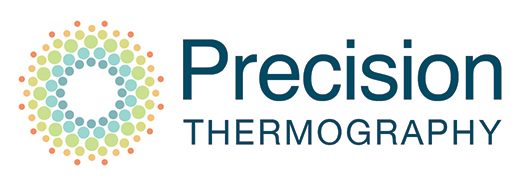THERAPY
“Where there’s hope, there’s life. It fills us with fresh courage and makes us strong again.” – Anne Frank
From time to time, we all need a little extra support to restore our health and energy. In those moments, IV therapy can offer powerful, effective relief. At Vance Medical Idaho, we provide a range of IV therapies designed to help even our toughest patients feel their best. Below, you’ll find some of the treatments we offer to support your journey back to wellness.
IV NUTRIENTS
Why IV nutrient therapy?
Let’s face it: the food we eat today isn’t nearly as nutritious as it used to be. In the quest for bigger, tastier, juicier, crunchier, higher yield, and more colorful food, nutritional value is usually forgotten. Add to that the overworked soils, growth-pushing fertilizers, pesticides and GMO’s and you’re left with more and more toxins and less and less nutrition. Another problem is that many people are unable to properly digest and assimilate enough vitamins to restore their health. In those cases, getting the nutrients intravenously can be a great option!
What Kind of Nutrients?
One of the most important nutrients we put in our IV’s is vitamin C. Because humans don’t have the ability to make their own Vitamin C, they must absorb it through their diet or introduce it to their body intravenously.
Vitamin C can help with fighting any infection, detoxification, autoimmune processes, healing, growth and many other things. In addition to vitamin C, we often provide various B vitamins and essential minerals like calcium, magnesium, potassium, etc.
How is it Done?
Typically, we tailor the IV nutrients to the needs of the patient, oftentimes starting at a lower dose and working up on the dose as tolerated.
While it is not uncommon for a patient to feel significantly improved after a single IV, it may take a while for many patients to notice a significant sustained difference. Remember, you didn’t become sick or nutrient depleted overnight, and it may take some time for your body to return to a healthy balance.
MAH/UBI
What is MAH?
Major Autohemotherapy (MAH) is a form of therapy in which blood is drawn from an IV site, oxygenated and ozonated, and then reintroduced back into the body.
How is it Done?
We place an IV in the vein, remove the necessary blood, and place it in a bag of saline along with an anticoagulant to prevent clotting. We then introduce a mixture of oxygen and ozone, allowing it to oxygenate the blood. Next, the oxygenated blood is run through ultraviolet light (UBI) and back into the body. (See UBI information below)
What is UBI?
Ultraviolet Blood Irradiation (UBI) is a form of IV therapy in which blood is drawn out of the body, run through ultraviolet light, then run back into the body again. The therapy was discovered in the 1920’s during the pre-antibiotic era. At that time, it was found to have a remarkable effect in fighting infection, often bringing otherwise incurable patients back to health.
How is it Done?
Most often, Ultraviolet Blood Irradiation is administered at the same time as Major Auto-Hemotherapy (MAH). After the IV is placed, we draw some blood, place it in an IV bag and ozonate it before running it back into the body. On the way back in, it is run through ultra-violet light.
HIGH DOSE OZONE
Ozone, an activated form of oxygen, has been used successfully in treating a number of illnesses including killing bacteria, yeasts, fungi, viruses, etc. High Dose Ozone (HDO) is a form of Major Auto-Hemotherapy (MAH – discussed above) in which we withdraw blood, heavily oxygenate and ozonate it, and return it to the body. The difference between MAH and HDO is the amount of blood treated. In MAH, approximately 60 mL of blood is treated while, with HDO, we typically remove and treat approximately 500 mL (1 unit) of blood, before returning it back to the body.
This process of removing, ozonating and returning the blood is considered “one pass.” We can repeat this up to three more times in one visit to accomplish what we call our “four pass” HDO. That means that, in total, about 2 liters (roughly 40% of your entire blood volume) is removed, oxygenated and ozonated, and returned to the body.
So what does all this additional oxygen and ozone do? We feel that it can provide additional benefit with fighting against infections, removing toxins, treating autoimmune disorders and much more.
IV KETAMINE
What is Ketamine?
Ketamine is a general anesthetic which has been used for surgeries world-wide for over 50 years. It is remarkably safe and is on the World Health Organization’s list of indispensable medicines that every country should have.
History of Ketamine
Discovered in the 1960’s, ketamine was found to provide extraordinarily safe anesthesia, and was used extensively in the Vietnam War. It has since been used frequently around the world for general anesthesia, especially in developing countries. In the 1980’s it was occasionally used as a recreational drug (related to PCP), and since then has been used less in the United States. Over the last 10-15 years, it has been recognized increasingly to have significant effects on mood. Multiple studies have shown that it has a much faster acting effect than traditional antidepressants or other medicines.
How Does It Work?
Although the entire mechanism of action is unknown, ketamine is known to affect the NMDA (N-methyl-D-aspartate) receptors in the brain, altering the levels of active glutamate. Questions remain as to whether this is the main cause of benefit with mood disorders, but regardless, it seems to have an extraordinary effect.
Conditions Ketamine Might Help
- Resistant major depressive disorder
- Resistant generalized anxiety disorder
- Post-Traumatic Stress Disorder (PTSD)
- Suicidality
- Generalized anxiety disorder
- Complex Regional Pain Syndrome (CRPS)
- Fibromyalgia
- Chronic pain
What Happens During an Infusion?
Before starting IV Ketamine, patients receive a full medical evaluation, with a review of symptoms, history, medications, etc. Additional lab work may be ordered as needed. Typically, six separate ketamine treatments are given within a two-week time period. At the time of therapy, the ketamine is infused at a very specific dose and rate which is closely monitored. Vital signs (pulse, blood pressure, oxygen levels) are also closely monitored. Lights are dimmed and an eye mask is provided while patients listen to relaxing music throughout the infusion. Patients are usually able to respond to questioning during the entire process. Infusions may last from 30-60 minutes, and afterwards patients are observed until they can walk and communicate without difficulty. Patients must provide a designated driver for transportation following the recovery period.
EBOO or RHP
EBOO, also known as RHP (Recirculatory Hemoperfusion), is most likely the highest quality oxygen / ozone treatment currently available on the planet. This therapy was invented by Peter Jovanovic, PhD, and involves drawing blood from a vein, running it through a filter while oxygenating / ozonating it, and reintroduced it back into the body through another vein. The entire process is powered by a pump that moves the blood continuously, in a way very similar to a dialysis unit. With this therapy, we can heavily oxygenate and ozonate large amounts of blood much more quickly than with any other method. Because of the ability to filter the blood, patients typically experience much less of a “die off” or “Herxheimer” reaction than with most other ozone methods.
According to Dr Jovanovic, this therapy can help significantly with cardiac disease and arterial plaque by filtering out the excess cholesterol (the purpose he initially designed it for). In addition, it may improve kidney function by temporarily relieving the kidneys of having to work as hard during the procedure due to the dialysis-like function of the machine. In addition, because of the large amounts of oxygen and ozone, the process works very well for infections, autoimmune diseases, and multiple other acute and chronic medical issues.
Ozone, as an “oxidant,” helps to greatly increase the body’s ability to handle other oxidants (including toxins and infections). The O3 (ozone) is broken down to oxygen and so in addition to receiving the benefits of oxidant therapy you are also increasing oxygen in the body. We at Vance Medical are proud to have this world class therapy available to our patients!
IV CHELATION
We offer heavy metal testing through our office.
The concept behind chelation is that a chelating agent will grab onto a heavy metal and surrounds it so that both the chelating agent and the substance are excreted from the body. Because of the chelating agent, the rest of the body is protected from the heavy metal reacting with it.
Most of us have had some exposure to multiple toxins from the food we eat, water we drink, and air we breathe. Some of those toxins that can cause multiple problems are heavy metals including lead, mercury, cadmium, uranium and others. We can receive exposure to these from gasoline, paints, various chemical compounds, and even dental work or eating seafood. According to the CDC there is no safe limit for exposure to some of these heavy metals, so even small amounts can cause significant damage.
Lead, for instance, can lead to developmental delay, decreased IQ, hypertension, and even heart attacks. Different heavy metals tend to congregate in different parts of the body. For instance, lead is frequently stored in the bones, and may be there for many years. As people age and begin to get osteoporosis some of the lead can leach out. Some theorize that is one of the major causes of hypertension and heart disease in the country.
With IV Chelation, EDTA is used to grab on to several of the heavy metals and allow them to be excreted from the body. This process takes multiple treatments and IVs are administered typically 1-2 times per week. It is recommended to take additional mineral supplementation throughout the duration since the EDTA eliminate the essential minerals as well as harmful ones.
IV Chelation therapy has also been shown to reduce the risk of a second heart attack by up to 40% and has likewise been shown to SIGNIFICANTLY decrease the risk of heart disease in diabetics. It is believed that it may also reduce the risk of coronary artery disease, peripheral vascular disease, and plaque within the arteries.
A newer and potentially much faster way to remove heavy metals is to alternate 1/2 a dose of chelation with the EBOO therapy. Using this protocol, as much as 50% of many of the heavy metals can be safely removed in as little as 3 weeks.
PEMF (PULSED ELECTRO-MAGNETIC FIELD)
Pulsed Electromagnetic Frequency therapy has been shown to boost circulation and oxygenation, effectively reducing pain and inflammation and aiding healing, recovery, and performance enhancement. While many other clinics employ PEMF therapy in their practices, the majority of these are low- intensity. Vance Medical uses higher intensity PEMF which aids the body in fast and more complete recovery on the cellular level.
For each session, we adjust the machine’s setting to the patient’s comfort level. At lower power, the patient may not feel much of a sensation, but at the higher levels they may feel gentle muscle contractions.
When being used before receiving an IV, the patient lays down on top of a mat that contains a set of coils from the PEMF, and has another mat placed over the top of them. Using this method, it creates the electric field necessary to effectively enhance the transportation of nutrients and waste products across the cell membrane, helping cells to detoxify and absorb nutrients more effectively.

